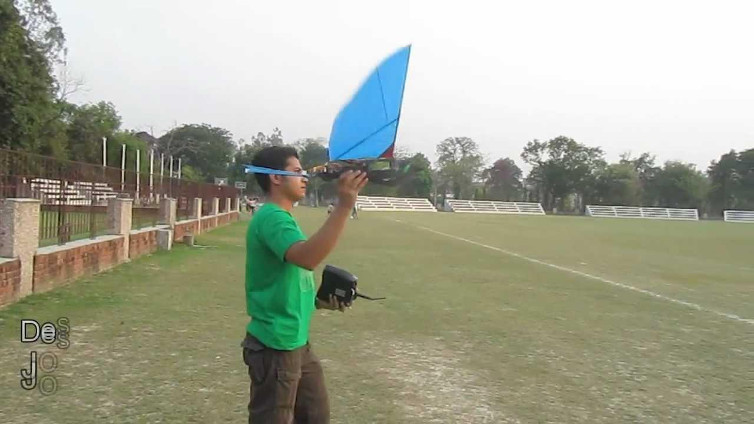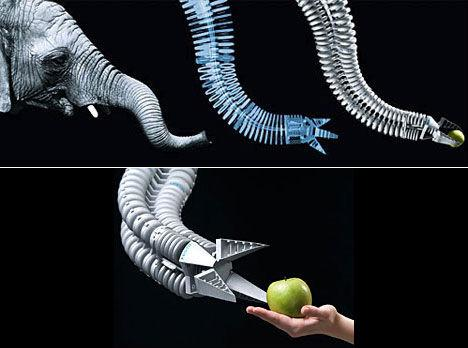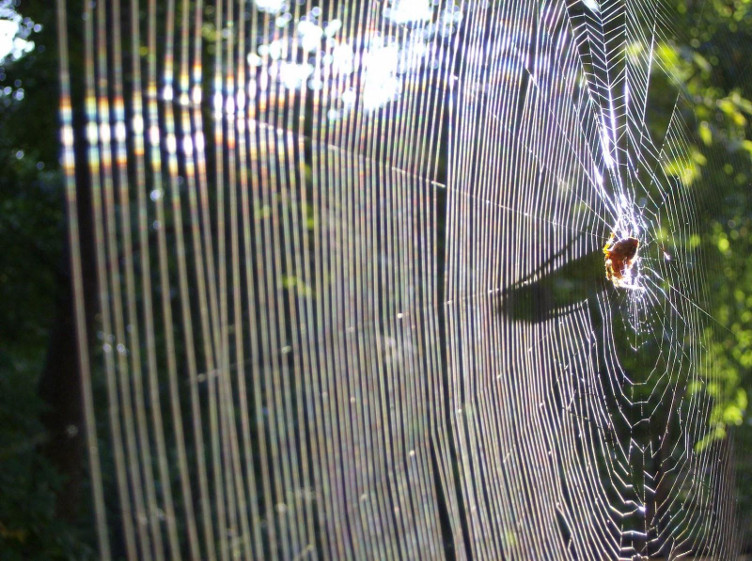
COURTSEY: indianblogger.com
There's Music in the sighing of a reed;
There's Music in the gushing of a rill;
There's Music in all things, if men had ears:
Their Earth is but an echo of the Spheres.
- Lord Tennyson
Since the dawn of ages, Nature has always played Muse to humanity and the earliest expressions of that overpowering feeling gushed forth in form of various arts which seek to capture Beauty in some form or the other.
But, a closer inspection would also reveal that Nature has always been a constant source of inspiration in our technologies too. Millions of years of natural selection often ensures very high level efficiency designs suiting various environs and challenges assosciated with them; so, in the recent years, scientists are very actively turning towards biological systems for inspiration and understanding of how these systems so efficiently employ resouces available to them for long-lasting solution with maximal perfomance using minimal resources.
One of the early giants in biomedical engineering, Otto H. Schmitt coined the term 'biomimetics' in 1969 (derived from 'bios', meaning life, and 'mimesis', meaning to imitate) to represent the study and imitation of nature’s designs, methods and processes.

COURTSEY : student.iitk.ac.in
Though, the idea of copying designs from nature is not new. Elaborate sketches of Leonardo da Vinci describe a bird's flight and inspired flying machine design, which has been successfully realised as 'ornithopters'.
While some of the basic configurations and designs can be copied (like a diver's fins or wings of ornithoraptor ), for most of the ideas from nature, proper adaptation of analogues from biology to technology is more often needed (like the wings of an aeroplane or a solar cell ).
Exciting new avenues are being explored even as you read these words and researchers are turning towards Nature to seek inspiration for better designs. Termite-mound inspired air-conditioning systems, strong fibres inspired from spiders' web, Gecko feet inspired self inspired adhesive tape,self-cleaning fabrics and even, robots shaped like jellyfish and hummingbirds for spying etc., are a few of many examples that show the progress of this dynamic discipline.

COURTSEY: festo.com
Biomimetic research starts with detailed investigation into structure–function relationships in biological systems or natural products. Based on the strategies and designs found in nature, bio-inspired systems may be developed and indeed, scientists have been able to systemise various strategies for the same investigation.
Following example of Spider silk may help in describing the aforementioned principles.
Spidey Strength
The silk produced by a spider is far superior in toughness and elasticity to Kevlar, which is widely used in bullet proof vests, aerospace structures, and other applications where there is a need for strong but lightweight fibers. The average tensile strength of the radial threads of spider silk is about 1150 MPa, while that of steel is about 400 MPa (Vogel, 2003); i.e., former can bear roughly three time more load than what it takes to snap a steel wire of identical dimensions. With such properties, spider silk can be an ideal substance for body armors, shock absorbers and even bandages (as it has antiseptic properties too!).
Spiders, unlike other silk producing insects, are capable of producing not of one but up to seven types of silk for various functions like for making temporary scaffolding during making web, protective sacs for cocoon, the capturing lines of the web, the outer rim of the web etc.

COURTSEY : textileartscenter.com
Spider silk has fibrous structure, mainly composed of repetitive units of alanine and glycine (very lightweight, closely packing units, resulting in very low densities ), which are further stabilised by interesting interplay of other constituents.
Pyrrolidine, a hygroscopic ('water-holding' ) substance keeps the threads from drying out and occurs in especially high concentration in glue threads (which are coated with very good bio-adhesives, worthy of a seperate discussion ), used for capturing prey. Potassium hydrogen phosphate helps keeping the silk acidic to protect it from microbes which would otherwise digest the protein. Potassium nitrate supposedly prevents the silk protein from being damaged in the acidic environment.
Here, we will focus only on general discussion of mechanical strength of spider silk and artificial replication of the same, with help of very basic models and processes.
Unique combination of lightness and strength of silk can be attributed to its structure which is really complex but a simple, though somewhat inaccurate model can help us understand its properties to a satisfactory degree.
Spider silk seems to be made up of protein chains which have very strong intermolecular connections, imparting it with strength but at the same time are interspersed with regions containing amorphous, unlinked proteins which can deform easily, thus making the fibre flexible and elastic too!
Unlike silkworms, spiders are quite agressive and protective of their territory, and hence, cannot be farmed. Moreover, the exact glandular mechanism of natural production of silk in spider cannot be feasibly replicated in a laboratory. So, various alternatives have been proposed and tried, some which are listed as the following:
-
Interestingly, silk glands of spiders and mammary glands of goats have remakable degree of similarity and with suitable genetic engineering, the mammary glands start producing milk which has a fluid which can be extracted from milk amd drawn to make spider silk.
-
Introduction of silk protein producing genes to certain bacterial cultures, causes them to produce required protein which can be spun in silk threads.
-
Artificial techniques which can produce spider silk (or resembling substance) out of biological systems are still at early developmental stage but some like microfluidics (involves use of capillary forces to handle very small amount of polymer liquid which then, can be drawn into fine fibres), electrospinning (involves drawing very fine fibres from a liquid polymer solution using electric charge) etc. are quite promosing.
We can see how one can try to understand how fantastic natural systems work and then, try to mimic the 'educator Muse' to tackle analogous challenges.

 © Nerd Magazine, IIT Kanpur,2017. All rights reserved.
© Nerd Magazine, IIT Kanpur,2017. All rights reserved.
Comments
comments powered by Disqus